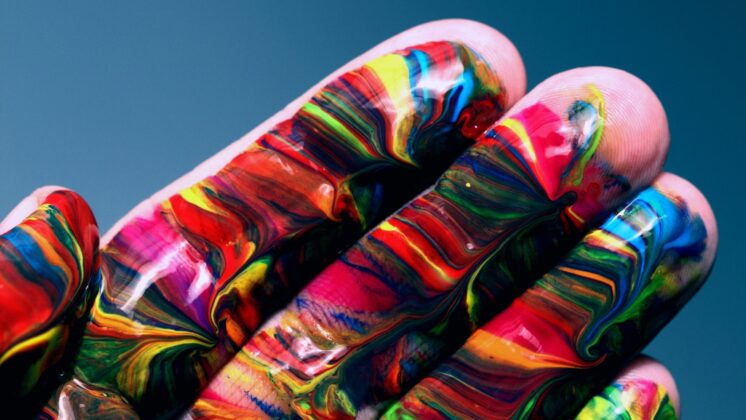“Innovation” has become a buzzword in nearly every sector of business. Everyone wants to find the next big thing—the next shortcut to streamline operations, the next product to wow customers. And why shouldn’t they? Innovation is how we got the printing press, the railways, the radio, and (more recently) the internet and smartphones.
Such advancements in technology tend to dominate our impression of innovation. But does this mean innovation is best left to tech-savvy engineers? Or could there be something to looking for a connection between art and innovation?
At the 2019 G1 Global conference panel “Innovation through Art: Leveraging Disruption for a Sustainable Ecosystem,” moderator Takashi Mitachi, senior advisor at the Boston Consulting Group, suggested that art drives innovation beyond logic and data. It is art, he said, that disrupts society to add value.
But what is art? This question has almost become a cliché in Western society, a joke to dispel the overwhelming idea that art can be found in everything. If art isn’t restricted to paintings, sculptures, photography, and other obvious forms, where does it end?
Perhaps it doesn’t. And perhaps art and innovation have that in common.
Most artists would agree. Art can be found in everything because art is fueled by creativity—the same force that drives innovation. To reach our innovative potential, then, there are two widespread misconceptions that must be overturned:
- That there is a time and a place for creativity
- That valuable creativity is limited to the few, not a resource of the many
Next Article
5 Reasons Remote Work Is the Ideal Creativity Incubator
WE HAVE A DREAM: A Storybook of SDGs and Subjective Truth
A Time and a Place
One of the most famous Japanese art forms is Chado, often translated as “tea ceremony.” But Randy Channell Soei, a professor of Chado Urasenke, says this is a wording masters and students of his tradition resist.
The more accurate definition is the “Way of Tea,” he says. Though somewhat ritualistic, “it’s not really a ceremony. [It’s an] interaction between host and guest, guest and guest.” Translating Chado as a “ceremony” misaligns what lays at the heart of it: the shared experience.
Similarly, limiting when and how innovation happens can cause businesses to miss the point—that is, that innovation is a creative, shared exercise meant to unrestrictedly generate new ideas. This can be difficult to remember in a workplace hierarchy under the strain of budgets and oncoming deadlines. But bringing down walls (both literal and figurative) has a pretty good track record when it comes to changing things for the better.
At the G1 Global panel, Channell Soei offered one example, explaining how Japanese parents seeking artistic instruction for their children traditionally had no choice but to submit to the masters for instruction. This system lasted for centuries, right up to the bubble economy of the 1980s. Then, suddenly, a slew of culture centers opened across the country with opportunities for people to study the arts without the rigid hierarchy of traditional schools and the personal obligations involved. Creative pursuits were within reach all the time everywhere, and Japan experienced an artistic boom.
A Resource for the Many
Even if opportunities for art and innovation were opened to the masses, there remains a secondary hurdle: the presumption that certain individuals are inherently more capable of innovation (and generally, success) than others. That is to say, some people just naturally have better ideas.
Is this true? Or does limiting the number of artists and innovators to the “talented” inevitably limit results?
Taihei Shii, CEO of blockchain company Startbahn, insists that creativity is in everyone. “We’ve been doing art for a thousand years in every society. It’s a natural thing to do.”
Artist Mai Miyake agrees that “there is no hierarchy in art,” neither among artists, nor subjects. To her, a tea bowl carries the same aesthetic potential as a grand castle. When it comes to convincing others that art and innovation should be left to the “creative types,” she suggests approaching the problem like an artist: “If someone says, ‘This is the way it is,’ an artist tends to think, ‘…Really?’”
Disrupting counterproductive notions that creativity (and thereby art and innovation) comes only from the talented, the tech-savvy, or the highest tiers of a company is the key to meaningful innovation. From the printing press to the smartphone in your pocket, the innovations that last in our collective memory are those that impact society for the better and build a stronger global community for the future.
*For further insights, watch the full G1 Global panel below:





